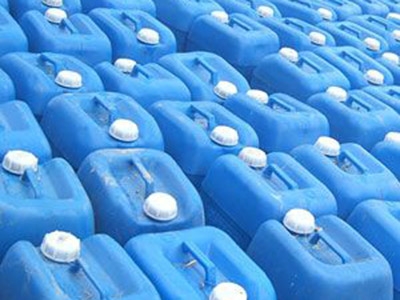Chemical precipitation method is to add some specific chemical substances to wet process phosphoric acid to form precipitation with impurities in the acid, which is filtered and separated to remove impurities. The main advantages of this method are: simple process, less investment and low production cost. The disadvantage is that the purification effect is poor, and other ions will be introduced, which will bring trouble to the subsequent deep purification. Chemical precipitation is one of the commonly used methods for defluorination or removal of various harmful heavy metals from wet process phosphoric acid. The representative methods are neutralization precipitation and sulfide precipitation. For example, Weifang Huabo chemical said the following examples:
(1) Fluorine and silicon removal: Fluorine in wet process phosphoric acid usually exists in the form of SiF6. Sodium salt (such as NaCl) or potassium salt is often added in industrial production to form insoluble Na2SiF6 or K2SiF6 precipitation with it. Fluorine and silicon can be removed after filtration and separation.
(2) Sulfate removal: add calcium salt (when the requirements are not high) or barium salt (when the requirements are high) to form insoluble CaSO4 or BaSO4 precipitation with it, which can be removed after filtration and separation.
(3) Removal of iron, aluminum and magnesium: add alkaline substances (such as Na2CO3, NH3, etc.) and wet process phosphoric acid for partial neutralization (pH = 2.5 ~ 3.0) to form a series of complex compounds of water-insoluble iron, aluminum and magnesium phosphate, which can be removed after filtration and separation.
(4) Arsenic, lead and cadmium removal: sulfide (such as Na2S, P2S5, etc.) is added to form insoluble arsenic sulfide or sulfide heavy metal compound precipitation, which can be removed after filtration and separation. In the early years, when China produced industrial sodium tripolyphosphate products, the wet process phosphoric acid was purified by the above chemical precipitation method, that is, soda ash and wet process phosphoric acid were used for "two-stage neutralization" , the above ①, ② and ③ precipitates are formed in the initial stage neutralization, the impurities are removed through pressure filtration, and the clear liquid is neutralized with alkali to prepare sodium tripolyphosphate product.
Production practice shows that, The content of sodium tripolyphosphate (na5p3o10) in the prepared product is usually only 85 ~ 92%, which only meets the national standard sodium tripolyphosphate for industrial use Gb9983-2004 grade II products are difficult to produce grade I products, let alone reach the index of superior products. In addition, the recovery of P2O5 in phosphoric acid is only 75 ~ 80%. Therefore, since the 1990s, China has used thermal phosphoric acid to produce industrial grade sodium tripolyphosphate products.
The above chemical precipitation purification method of "two-stage neutralization" is also used to produce feed grade calcium hydrogen phosphate with wet process phosphoric acid in China. The calcium hydrogen phosphate obtained in the initial neutralization process can only be used as fertilizer because it contains more impurities and does not meet the relevant standards; Feed grade calcium hydrogen phosphate was obtained only after neutralization. The proportion of two grades of products (calculated by P2O5) is 0.5/0.5 ~ 0.3/0.7. Based on the same principle, the above chemical precipitation purification method of "two-stage neutralization" can also be used as raw material to produce fertilizer grade and industrial grade ammonium phosphate at the same time. However, there is no report on relevant pilot test or industrial production so far.
